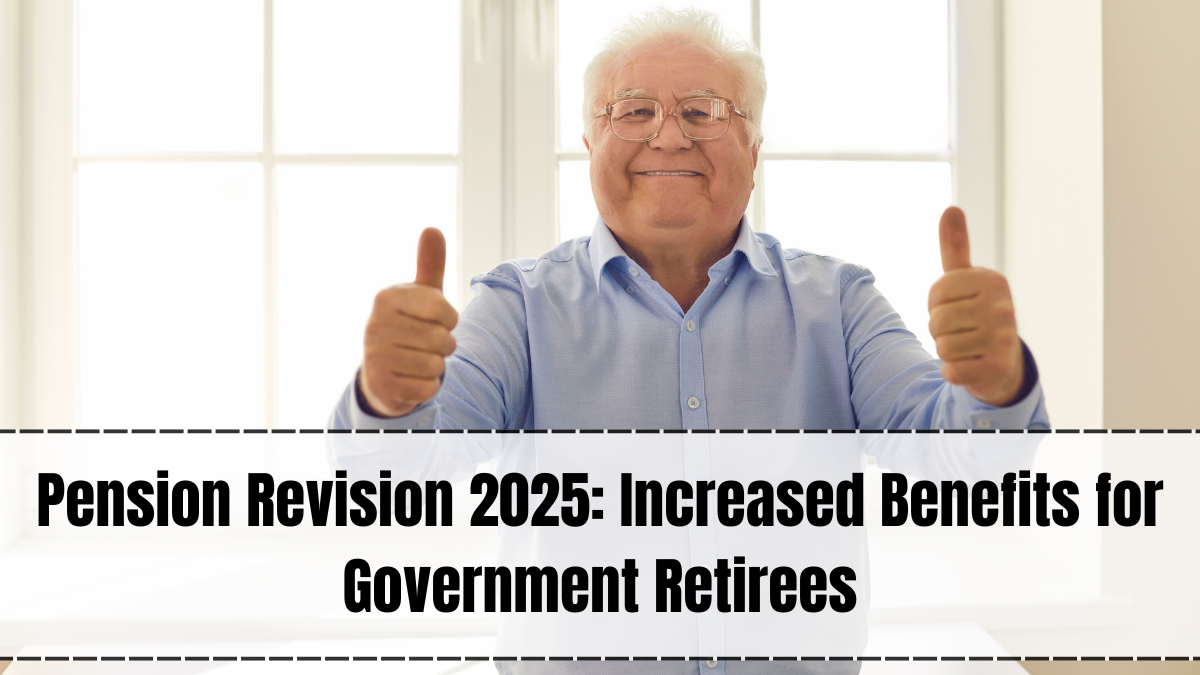The pension revision 2025 marks a significant improvement in the financial security of retired government employees. With the rising cost of living and inflation impacting daily expenses, this year’s revision ensures that retirees receive higher payouts, updated calculation methods, and faster disbursement of funds. Government retirees, particularly those who served in central and state departments, now enjoy a more robust pension framework designed to support their post-retirement life with dignity and stability.

Overview of Pension Revision 2025
The pension revision 2025 applies to central government retirees, state government retirees, and certain public sector employees covered under specific pension schemes. This revision is the result of ongoing government efforts to align pensions with current market realities and provide retirees with adequate income for their essential needs. The updated pension rates are based on revised pay commission recommendations and economic considerations, ensuring fairness for long-serving employees.
Key highlights include:
-
Increased basic pension amounts.
-
Revised calculation formula to include updated pay matrix values.
-
Inclusion of additional allowances for specific categories such as armed forces veterans, widows, and disabled pensioners.
-
Faster grievance resolution for delayed payments.
Increase in Pension Amounts
One of the most impactful changes in the pension revision 2025 is the substantial increase in monthly pension payouts. Retirees can now expect a 10–15% rise in their basic pension, depending on their last drawn salary and years of service. For example, a central government employee who retired at Level 10 of the pay matrix will now receive a revised pension that better reflects inflation-adjusted rates.
Additionally, dearness relief (DR) has been adjusted to match current inflation indices, ensuring that pensioners maintain their purchasing power. This update benefits not only recent retirees but also those who retired several years ago, as the revised rates apply retrospectively from January 2025.
Updated Calculation Method
The pension revision 2025 introduces a more transparent calculation method, reducing discrepancies in pension determination. Instead of relying on outdated fixed slabs, the new system uses the latest pay matrix values and applies a uniform multiplier across service categories. This approach ensures that employees of similar grades and service lengths receive proportionate benefits, eliminating the gaps seen in previous calculations.
Under the new method:
-
Pension is calculated as 50% of the average emoluments from the last 10 months of service or the last pay drawn, whichever is higher.
-
The revised pay matrix is applied before calculating the final pension amount.
-
Special category allowances are factored in for eligible retirees.
This ensures fairness and clarity in pension payments across departments.
Benefits for Special Categories
The pension revision 2025 also focuses on special retiree categories who need additional financial support. Key beneficiaries include:
-
Armed forces veterans – Receive enhanced pension rates and additional service-related allowances.
-
Family pensioners – Widows and dependents of deceased employees benefit from increased minimum family pension amounts.
-
Disabled pensioners – Receive higher allowances and medical benefits.
In addition, pensioners above 80 years of age now receive extra percentage-based increases on top of their revised pensions, helping them manage higher medical and care-related expenses.
Payment and Disbursement Process
The pension revision 2025 has been integrated with the government’s Direct Benefit Transfer (DBT) platform, ensuring faster payments directly to pensioners’ bank accounts. Updated pension orders are being issued digitally, reducing paperwork and delays. Most beneficiaries will see their revised pension reflected in their next payment cycle, with arrears for the period starting January 2025 credited automatically.
Steps taken to ensure smooth payments include:
-
Linking all pension accounts with Aadhaar.
-
Setting fixed disbursement dates (1st–5th of each month).
-
Sending SMS/email alerts after every deposit.
Application and Grievance Redressal
Most pensioners do not need to reapply for the pension revision 2025, as the updates are applied automatically. However, retirees whose service records or bank details are incomplete must update them via the central or state pension portal.
For grievances:
-
Pensioners can file complaints online through the government’s pension portal.
-
Toll-free helplines are available for senior citizens.
-
Pension Adalats (special grievance hearings) are being organized quarterly for quick resolution.
Impact on Retirees
The revised pension revision 2025 framework brings tangible benefits for over 65 lakh retirees nationwide. With higher payouts, improved calculation fairness, and faster credit cycles, pensioners are better positioned to manage expenses such as housing, healthcare, and daily living costs. This revision not only uplifts financial stability but also strengthens trust between retirees and the government.
FAQs
Who is eligible for pension revision 2025?
All central and state government retirees, along with certain public sector employees covered under pension schemes, are eligible.
How much increase can I expect from pension revision 2025?
Most retirees will see a 10–15% increase in their basic pension, along with adjusted dearness relief.
Do I need to apply for the pension revision 2025?
No, the revision is applied automatically unless your records are incomplete, in which case you must update them.
How is the pension calculated under pension revision 2025?
Pension is now calculated using updated pay matrix values, taking 50% of the average emoluments of the last 10 months or last pay drawn.
When will the revised pension be credited?
Revised pensions and arrears from January 2025 are credited in the next monthly payment cycle.
Click here to know more.
